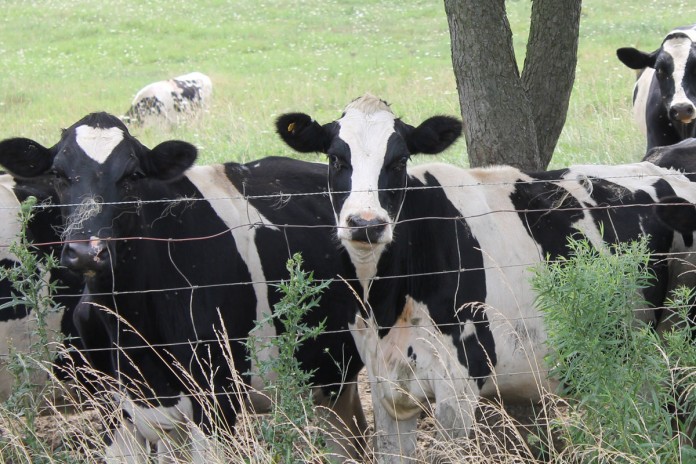No, I’m not talking about the volunteer fire department.
At least, I hope you don’t need this emergency unit at your farm at this time. If you do, stop reading and call 911 immediately.
Although, it is a good opportunity to remind you not to bale hay too wet this spring which increases the risk for a barn fire.
Feed directive
What I am referring to is the new Veterinary Feed Directive which is to take effect on Jan. 1, 2017. The purpose of the VFD is to put in place a program to help insure the judicious use of antimicrobials.
There continues to be increased focus on the use of antimicrobials for treatment purposes only, not for disease preventive purposes, to reduce the risks of contamination of the food supply and microbial resistance to drugs.
Related: Veterinary Feed Directive: What producers need to know for the new year
Drug classes
The three general classes of drugs are over-the counter (OTC), prescription, and VFD drugs. The OTC drugs can be distributed without the need for a prescription, but the future availability of such drugs is in question.
The US Food and Drug Administration (FDA) is responsible for overseeing the VFD program and designating which drugs are VFD drugs. Once a drug is determined to be a VFD drug, this drug can only be used under the professional supervision of a licensed veterinarian.
What is a VFD?
By definition, a VFD is “a written statement issued by a licensed veterinarian in the course of the veterinarian’s professional practice that orders the use of a VFD drug in or on an animal feed.”
This written statement authorizes the client to obtain and use the VFD drug in or on an animal feed to treat their animals only in accordance with the directions for use approved for the drug by the FDA.
Know your vet
A veterinarian can issue a VFD to a client only if a valid veterinarian-client-patient relationship (VCPR) exists. Thus, farmers need to be working with their veterinarian now to make sure this VCPR is in place. The specific requirements for this VCPR may vary by state.
VFD form
A VFD form is needed for each VFD drug prescribed that provides contact information for the client and veterinarian, the explicit instructions and purpose for use of the prescribed drug, including the expiration date for the VFD, and the signature of the licensed veterinarian.
The completed VFD form can be sent to the drug distributor, e.g. feed mill, and the client either in electronic form or paper copy.
All parties involved in the use of the VFD drug must retain a copy of the VFD for 2 years.
Extra-label use of medicated feed, including a VFD drug, will not be permitted.
Refills
The expiration date on the completed VFD form is the last date at which the feed containing the prescribed VFD drug can be fed. A veterinarian can prescribe a refill on the VFD feed if the label for the VFD drug being used authorizes refills based on the approval made by FDA.
Producers who manufacture their own feed must have a VFD in order to get the medicated VFD feed from the manufacturer.
A generic VFD drug form is available, but most companies have prepared specific VFD drug forms for each respective VFD drug that they manufacture.
Other guidelines
Ionophores, e.g. Rumensin and Bovatec, have not been designed as VFD drugs and thus feeding them does not require a VFD form; however, the feeding guidelines as described on the label need to be followed.
Although the VFD pertains only to feed, antimicrobials for use in water or administration orally or by injection need to be conducted under the advisement of a veterinarian.
These antimicrobials administered other than by feed also will require a prescription unless they are OTC medications.
Be proactive
Therefore, farmers are encouraged to make sure that their VCPR is in place and that they are aware of the steps that will be taken when working with their veterinarian should a VFD drug be needed on their farm.
Also, they should have a conversation with their feed mill and pharmaceutical companies on the steps that will occur in working with them for administration of a VFD drug prescribed by a licensed veterinarian.
Keeping good records and following drug administration protocols are very important elements of the new VFD.













